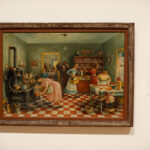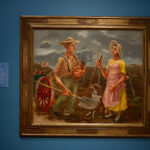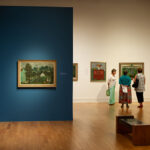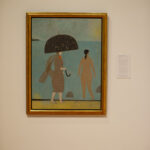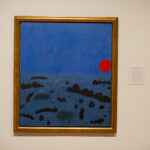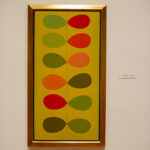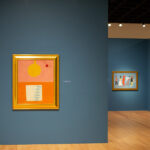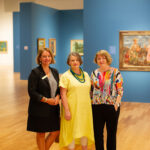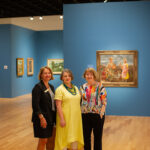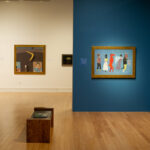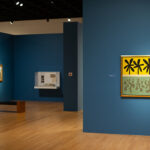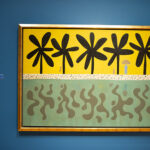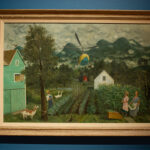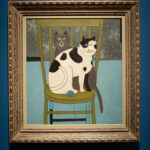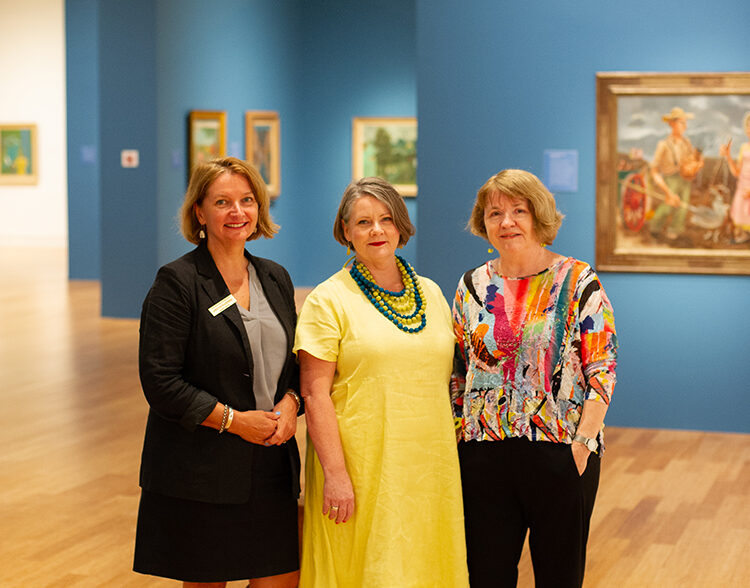
If you’re planning to go to the “Simple Pleasures: The Art of Doris Lee” exhibition at the Vero Beach Museum of Art – and you definitely should – be sure to leave yourself lots of time. Even then, you may need to return to fully grasp the enormity of Doris Lee’s work, displayed in the Holmes and Titelman Galleries through Sept. 18.
“She was one of the most well-known artists of her time,” says Melissa Wolfe, curator of American Art, Saint Louis Art Museum, who co-curated the exhibition with Barbara L. Jones, curator emerita, Westmoreland Museum of American Art.
Lee (1905-1983) was a hugely prolific, award-winning artist known for her figurative paintings, drawings, prints and illustrations. She was commissioned by Life Magazine, the New Yorker, Saturday Evening Post and other commercial projects for advertisements and designs for fabrics, pottery and even menus. Her artwork spans from the 1930s through the mid-1960s when, Jones says, “because of Alzheimer’s she faded from the scene. You wonder where she would have gone from there.”
Lee, who resided summers in the famed Woodstock artist’s colony with longtime partner Arnold Blanch, melded a host of artistic movements into a fashion all her own.
Wolfe says Lee “blew onto the art scene in a big way” with her delightfully detailed slice of American life, “Thanksgiving” (1935), which won the Logan Purchase Prize at an annual Art Institute of Chicago exhibition. The painting caused a “huge ripple” when Mrs. Logan, who preferred landscapes, was offended by the choice. The museum and public, however, loved it.
“Doris thought it was hilarious. I mean, Doris had a very good sense of humor, and she was quirky. I think she would have been a ball to hang out with,” says Wolfe.
Well-educated and known for marching to her own drum, Lee was basically a feminist at heart, and her women frequently take center stage. In “Thanksgiving,” nary a man is in sight as generations of women busily prepare the holiday meal surrounded by toddler twins, safely out from under foot in their highchair, two older siblings and the family pets.
Heat rises from the turkey, checked on by an aproned matriarch, as pots bubble on the wood-burning stove. Other women are engaged in various tasks, while a new arrival, still in her warm coat, begins to remove her hat. Shades of red run throughout the charming depiction, including the red and white checked linoleum flooring. Lee’s love of fishing could explain the mounted fish hung over the hutch.
Another “fearless and capable” woman, a continual theme in Lee’s work, pushes against convention in “The Widow” (1935). In it, a woman stands between two horses that have been frightened by a nearby snake, powerfully holding each by the bridle as they threaten to bolt.
“She uses women all the time to be the big, universal heroes. We usually think of men as gods and titans or whatever, but she always puts the women in that position,” says Wolfe.
“New House” (1946) is a humorous painting displaying what Wolfe describes as the push-pull tension of cubism within a folk-art design.
The home’s slab is down, a doorway lintel is up, and a man carries a hammer and a two-by-four. The woman, however, isn’t waiting for walls; she’s already sweeping a little rug on the floor alongside a couch, table and lamp. On one tree hangs a painting, and a piano, complete with sheet music, sits alongside another tree, where a child plays on swing.
The exhibit’s cover scene, “The View, Woodstock” (1946), depicts the view of a little backyard building from her studio window, as evidenced by its frame of draped curtains.
A man rests on a hammock as a woman toils in the garden, presumably Blanch and Lee.
“This is so tongue in cheek, Grant Wood’s ‘American Gothic,’” says Wolfe, pointing out the little building’s roof and curtains, and again noting the sophisticated mix of artistic forms.
“Actually, one critic says that it begins with Grandma Moses and ends up with [Milton] Avery,” says Wolfe. “You have to give her paintings more time than just going, ‘Oh, that’s so sweet.’ You really just have to stop, tell yourself to stand there, and just look for however many minutes.”
Indeed, there is often considerable activity taking place in her work. An example is “Alma Mater” (1947), which depicts many of the various activities she participated in at Rockford College, such as darts, archery, drama, graduation and lawn tennis. There is also a Maypole scene in it, which alone was reproduced as “Schoolyard Maypole Dance” on a Saturday Evening Post cover.
“Art Students League” (c. 1950s) represents yet another style, with its reduced palette and composition.
“This is very much a commentary on women and on women in the arts,” says Wolfe. The painting depicts a seated, nude model at work, facing unseen students.
“So, it’s a job. It’s sort of bringing that elevated, masculine definition of women, of the nude or the female body, and really giving it back to a female to own it,” says Wolfe. She adds that Lee believed women should be comfortable in their sex.
Commercially, Jones says Lee deftly navigated the line between commercial and fine art.
“Ads were the mainstay of magazines of that era,” Jones explains. “It was how you experienced the world; every other page was an advertisement.”
Life Magazine sent her around the world as an artist-correspondent, including to Africa and on a “tropic tour” to Key West, Cuba and Mexico. Jones says she drew an actual map to document where she went and wrote captions and stories about the places she visited.
“A number of gouaches become almost like postcards of her trip, and sometimes the paintings grew out of a gouache. You’ll see in the catalog the original gouache and it looks very different. When she was in Africa, she didn’t do gouaches, she did sketches, and she annotated with the colors that she wanted. Then, back in her studio, she’d create the painting,” says Jones.
“She was incredible. I always think of her as an entrepreneur. Most all of these commissions came through Associated American Artists, which is a gallery she joined in 1941. I mean, she was a busy woman,” Jones adds.
The exhibit’s wonderfully vibrant painting “Oklahoma! The Farmer and the Cowhands” (1943) was one of several commissioned by Life Magazine to commemorate that Broadway show’s one-year anniversary. Prior to that, in 1939 Life commissioned her to commemorate the Broadway musical “Showboat.”
Another painting, “Off to Auction” (1942), was created for the American Tobacco Company for a Lucky Strike advertisement in the New Yorker. Jones explains that Lee was the only woman in a group of 19 Associated American Artists sent all through the South to document the tobacco industry, from growing it to selling it at auction.
When she got the assignment, the packaging was green with a red circle, so she depicted a green wagon with red wheels. It’s piled high with vibrant yellow tobacco leaves and driven from the farm by a man and his family, accompanied by their faithful dogs.
However, soon after, the tobacco company changed its packaging to white with a red circle.
A marvelous colorist, Lee utilized hues to create depth in her depictions of Florida seascapes and landscapes. Among examples in the exhibit, “Sunset in the Florida Keys” (c. 1960s) features a dazzling red sun against various shades of blue. Another is “Causeway” (c. 1960), which clearly delineates a colorful cross-section of earth, sand and sea.
Photos provided

